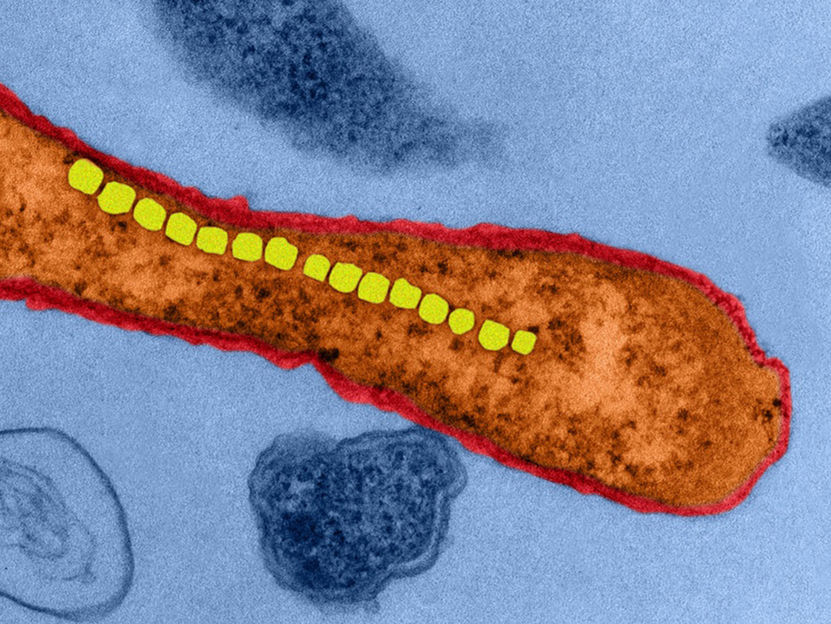Scientists unlock mystery in important photosynthesis step
An international team of scientists, including two from Arizona State University, have taken a significant step closer to unlocking the secrets of photosynthesis, and possibly to cleaner fuels. Plants and algae, as well as cyanobacteria, use photosynthesis to produce oxygen and "fuels," the latter being oxidizable substances like carbohydrates and hydrogen. There are two pigment-protein complexes that orchestrate the primary reactions of light in oxygenic photosynthesis: photosystem I (PSI) and photosystem II (PSII). Understanding how these photosystems work their magic is one of the long-sought goals of biochemistry. The ASU scientists working with collaborators at the Max Planck Institute at Mülheim a.d. Ruhr in Germany have been investigating the PSI reaction center.
They have made an important observation that is nut-shelled in a paper published in Proceedings of the National Academy of Sciences (PNAS). The paper is titled "Independent initiation of primary electron transfer in the two branches of the photosystem I reaction center."
Kevin Redding, an associate professor in the department of chemistry and biochemistry in the College of Liberal Arts and Sciences, is leading the research at ASU. His lab created mutations in a single-celled green alga (Chlamydomonas reinhardtii or 'Chlamy' for short). Using these mutants, Redding and collaborators have shown that the primary light-triggered electron transfer event in the PSI reaction center can be initiated independently in each of its parallel branches. At the same time, they showed that PSI has two charge separation devices that effectively work in parallel to increase the overall efficiency of electron transfer.
"Although we knew that both branches were being used in PSI, and that our mutations had an effect upon the relative use of each pathway, what we did not know was how these mutations were having their effect," Redding explained. "Unraveling that has led to the discovery of how charge separation – the moment when electromagnetic energy is converted to chemical energy – actually occurs."
The team at the Max Planck Institute (MPI) was led by Alfred Holzwarth. His coworkers, Marc Müller and Chavdar Slavov, used lasers that sent out pulses of light lasting only 60 millionths of one billionth of a second to investigate the electron transfer processes in the two branches of PSI. This allowed them to look at extremely early events in the photosynthetic mechanism, events occurring in just a few picoseconds, which is a time so short that a typical lattice atom could only execute a dozen oscillations on its lattice site.
This extremely sophisticated experiment and analysis required two years of laboratory effort from Rajiv Luthra, a graduate student in the Redding laboratory, to prepare a sample of sufficient purity to use. To interpret the observations, the researchers at the MPI had to develop a specific kinetic modeling approach that allowed them to estimate the individual electron transfer rates within the two branches. Comparison of mutants made in each branch with the non-mutant PSI was crucial to untangle these rates.
The current research is important for two separate reasons. Firstly, an understanding of how these complex processes work in Nature is crucial to future fundamental research in photosynthetic reaction centers, and this discovery may well be universal. Secondly, the use of two charge separation devices working cooperatively to maximize efficiency is a design theme that may well be applied in future efforts to create artificial photosynthetic devices.
Topics
Organizations
Other news from the department science

Get the life science industry in your inbox
By submitting this form you agree that LUMITOS AG will send you the newsletter(s) selected above by email. Your data will not be passed on to third parties. Your data will be stored and processed in accordance with our data protection regulations. LUMITOS may contact you by email for the purpose of advertising or market and opinion surveys. You can revoke your consent at any time without giving reasons to LUMITOS AG, Ernst-Augustin-Str. 2, 12489 Berlin, Germany or by e-mail at revoke@lumitos.com with effect for the future. In addition, each email contains a link to unsubscribe from the corresponding newsletter.
Most read news
More news from our other portals
Last viewed contents
Human Genome Sciences presents interim results of phase 2b trial of Albuferon with Ribavirin in patients with chronic hepatitis
*_(haplogroup)

EMCLAB Instruments GmbH - Duisburg, Germany



















































